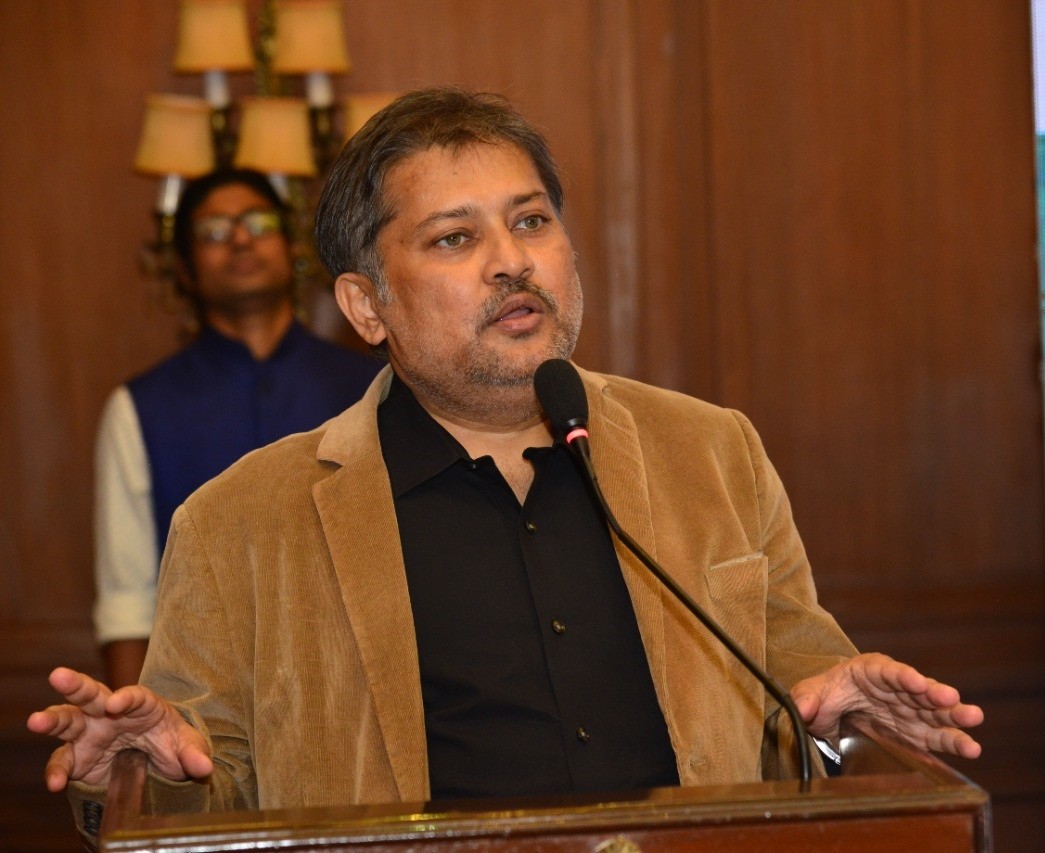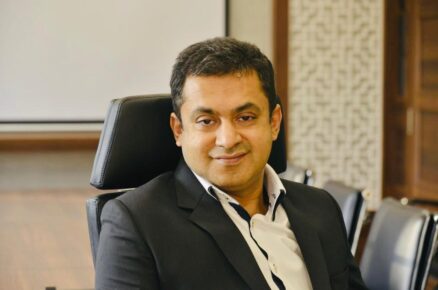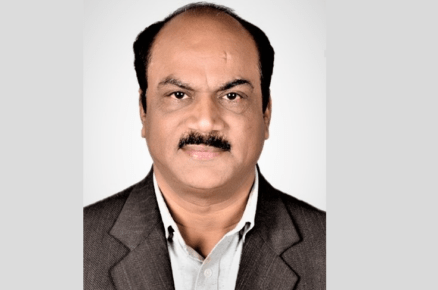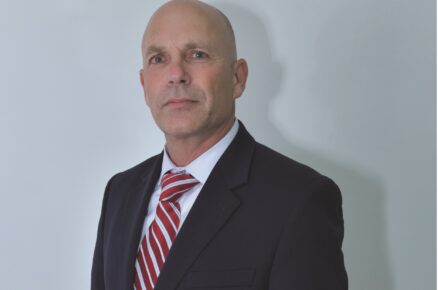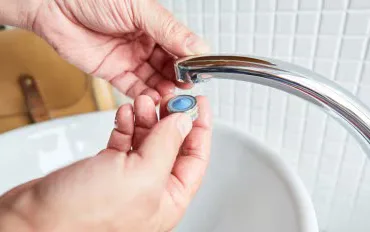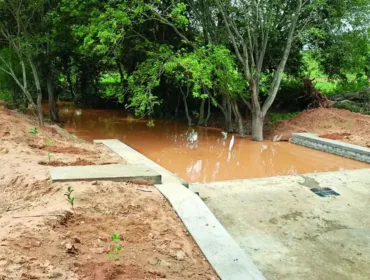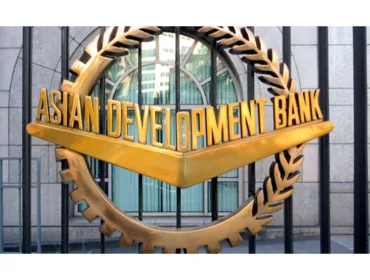Mr. Sabarna Roy, Senior Vice President
Electrosteel Castings Limited
Electrosteel Castings Ltd (ECL) is a pioneer in Ductile Iron Pipes in India, with a presence in 70 counties across the globe. In an exclusive interview with Water Digest, its Senior Vice President, Shri Sabarna Roy, spoke about the company’s vision and shared his views on sustainable water infrastructures.
Water Digest (WD): Can you please elaborate more on ECL’s collaboration with the French Government?
Sabarna Roy (SR): Electrosteel has had a longstanding history with France. We have had our French office in Arles for the last 20 years, and we have expanded in all parts of Europe and are now counted amongst the top two in the Ductile Iron Industry (in Europe).
We look forward to more collaboration and support in our endeavours in France.
To quote the Indian Prime Minister Honourable PM Shri Narendra Modi from a week back, “Long live Indo-French friendship”.
We were honoured to host the French Ambassador to India, His Excellency Emmanuel Lenain, and his team, at the Electrosteel Castings Limited’s Head Office on February 2, 2022.
This was a historic visit, as it was the first time ever the French Ambassador and his team visited Electrosteel Castings Limited.
WD: Please tell us about the Ad Diriyah project in Saudi Arabia.
SR: Electrosteel Castings Limited is part of the super-prestigious Ad Diriyah Project in Saudi Arabia.
Diriyah, the birthplace of the first Saudi state, historical crossroads of pilgrims and traders, and now, home to one of the kingdom’s most ambitious heritage developments.
This strategic project, ‘Implementation of the second phase of Strategic Water Plan in Riyadh (7B)’ near Riyadh, is for the National Water Company.
Electrosteel is supplying 20,000 metres of DI pipes in the diameter range of DN 300 and DN 400 Class C, Ductile Iron Pipes to ensure water supply, and linking the strategic reservoirs in the area to ensure water security for citizens, especially during the summer.
WD: ECL delivered pipes to Guntur in four days earlier this year. What were the challenges and how did you manage that?
SR: After a health scare, the ever-attentive Guntur civic body decided to replace the existing water pipelines laid 30 years ago with HDPE pipes, and asked Electrosteel’s Srikalahasthi Works to immediately supply 10 km of 100 mm diameter Ductile Iron pipes (which would replace the old HDPE pipes). Electrosteel Castings Limited supplied the pipes in four days flat.
We understood the emergency and we delivered like we do in 100 plus countries around the world.
WD: What are the benchmarks ECL has been following for the fastest delivery of DI pipes in different parts of the world?
SR: Automated Pipe and Fittings Production, elaborate and efficient Quality Assurance Plan, in-house inspection facility and dedicated work force in the commercial and Order Management Cell are the key factors for timely delivery of DI pipes and fittings.
WD: Do you think sustainable practices will help to create a reliable and consistent water infrastructure?
SR: Sustainability is the key requirement of the future world, especially in the water sector because portable water storage and sources are sinking day by day. As for India, 54% of the country faces high to extremely high-water stress. That’s why we have to adopt sustainable strategies to face the crisis. Wastewater treatment, desalination, dual piping, Life Cycle Cost Analysis, use of Restrained Jointed Ductile Iron Pipes in Horizontal Direction Drilling are some tools to achieve sustainability.
WD: India’s water infrastructure needs a complete overhaul and there is not much time left to do that. What extra efforts need to be taken in this direction?
SR: Although we don’t have much time left, this time, it is a historic opportunity because reforms should have started 30 years back but water has never been given the due place as a key infrastructure and livelihood sector. Now there is hope since the Government is already coming up with new water policies keeping sustainability and diversity in mind. Private players should also engage themselves in the water sector with technical and management aspects. New technologies with IoT-based infrastructures and planning are essential.
WD: What is your opinion about green infrastructure? How can it be included in urban planning?
SR: In the 21st century, Green Infrastructure such as rain gardens, bio-swales enable harvesting of run-off and filtration of contaminants and sediments, restored rivers with wet wetlands constructed for bio-remediation, urban parks, permeable pavements, sustainable natural drainage systems, green roofs, and green walls are a few examples to be included in urban planning. These will surely improve the groundwater scenario and reduce the stress on the freshwater which was earlier used for non-drinking purpose.
WD: How can we bridge the rural-urban infrastructure gap in times of rapid urbanisation?
SR: Urban population is going to explode in the next few decades. Rapid urbanisation leads to more informal sourcing of water. As many cities have sources from long distances it increases the cost of infrastructure and maintenance and also loss due to leakages and bad management.
The fastest-growing segments of urban India are small towns and semi-urban areas, which have a weak infrastructure and institutional capacities. However, these are also the areas with great opportunities for the most energy-intensive technology as small towns have not made the mistakes as big towns. In rural areas, most of the time, wastewater management is not done properly, creating a huge problem.
We can learn from the water managers, the institutes to bridge the gap in rural-urban infrastructure.
WD: Do you have a message for Water Digest readers?
SR: We need to improve the way we look at water. In the near future, water will be a highly precious material. We should work together and also at the individual level to minimise leakage, improve efficiency of treated wastewater in areas where it can be reused safely from today itself. Then only will the policies of the government be fruitful.




